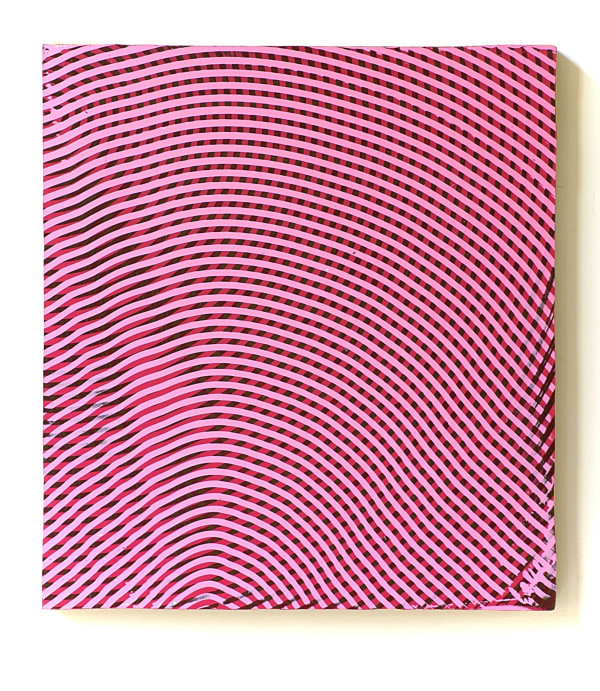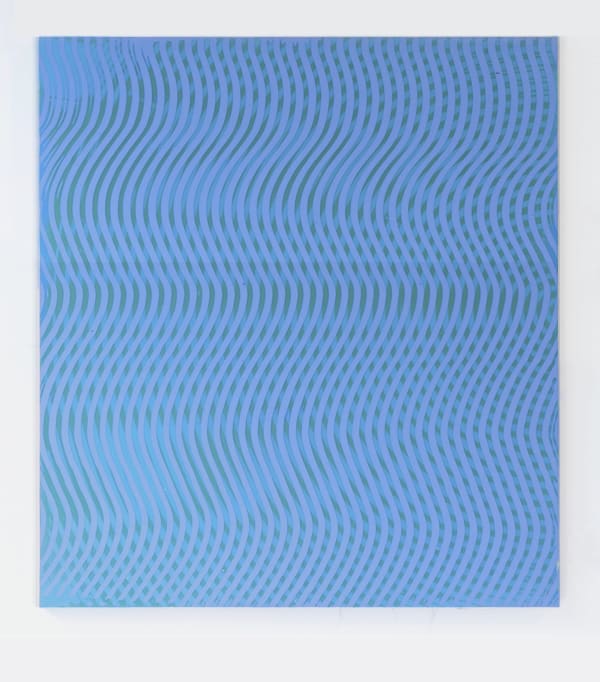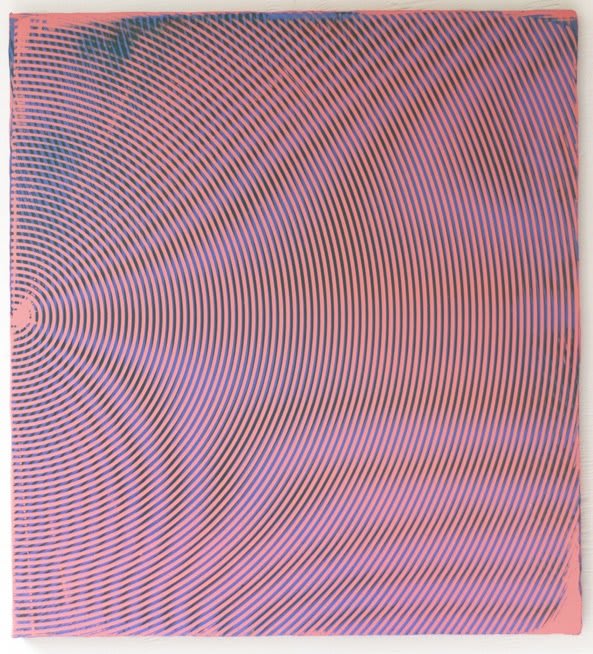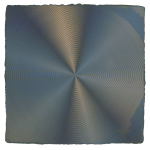Anoka Faruqee & David Driscoll: The Sum Is Greater Than Its Parts
Hosfelt Gallery, New York
Anoka Faruqee’s mastery of color, experimentation in pattern, and relentless study of the optic converge in an exhibition of extraordinary paintings rich with dichotomy.
One body of work, unlike anything she has exhibited before, riffs on the moire patterns that develop accidentally through digital processes. At first glance, they look digitally produced, but the viewer quickly becomes aware of a painstaking (and baffling) process and refined hand. Though referring to video display screens and unwanted digital detritus, their clearly purposeful creation reveals visual complexity, sophisticated color and rich physicality.
The surfaces of these paintings are glass-smooth, but Faruqee revels in the vagaries of her medium, integrating the heretofore rigid systems of op with the unruly sensuality of paint. She writes:
“My paintings are not slick, though they often appear so in reproduction. They expose their making — a slight topography of paint, an overlap or mis-registration, a slip of the hand. These moments emphasize the materiality of the process and the humanity of both the artist and the viewer. These physical irregularities actually augment the optical when used pointedly: a blurred edge or ridged surface provides a more intense optical event.”
These new works expand Faruqee’s longstanding practice of painting hundreds of handmade modules in subtly shifting colors to create color gradients that simulate light, shadow or painterly bleeds. The asterisk-shaped modules she uses refer to early studies of geometry, the traditional Islamic (and Faruqee’s contemporary) pursuit of a “content-less” motif, and the individual units that make up pixelation. These large “freehand” paintings are improvisational: Faruqee “grows” the painting, starting with a single, hand painted module on the edge or middle of the canvas. Through this process she refers to the seeming chaos and corresponding mathematics found in nature.
Though both bodies of work make reference to the of-this-moment vocabularies of computer modeling, Faruqee’s undulating spaces are not mapped mathematically, but are filtered through the physical nature of paint and the human act of painting.
Anoka Faruqee lives in New Haven, CT, where she is an Associate Professor at the Yale School of Art, and Acting Director of Graduate Studies of the Painting and Printmaking Department. A catalogue will accompany the exhibition.
-
 Anoka Faruqee2012P-16, 2012acrylic on linen on panel11.25 x 10.25 inches
Anoka Faruqee2012P-16, 2012acrylic on linen on panel11.25 x 10.25 inches -
 Anoka Faruqee2012P-15, 2012acrylic on linen on panel11.25 x 10.25 inches
Anoka Faruqee2012P-15, 2012acrylic on linen on panel11.25 x 10.25 inches -

-
 Anoka Faruqee2012P-14, 2012acrylic on linen on panel11.25 x 10.25 inches
Anoka Faruqee2012P-14, 2012acrylic on linen on panel11.25 x 10.25 inches -

-

-
 Anoka Faruqee2012P-17, 2012acrylic on linen on panel11.25 x 10.25 inches
Anoka Faruqee2012P-17, 2012acrylic on linen on panel11.25 x 10.25 inches -

-

-

-

-
 Anoka Faruqee2012P-23, 2012acrylic on linen on panel22.5 x 20.5 inches
Anoka Faruqee2012P-23, 2012acrylic on linen on panel22.5 x 20.5 inches -

-
 Anoka Faruqee2012P-13, 2012acrylic on linen on panel11.25 x 10.25 inches
Anoka Faruqee2012P-13, 2012acrylic on linen on panel11.25 x 10.25 inches -

-

-

-

-
 Anoka Faruqee2012P-29, 2012acrylic on linen on panel22.5 x 20.5 inches
Anoka Faruqee2012P-29, 2012acrylic on linen on panel22.5 x 20.5 inches -
 Anoka Faruqee2012P-31, 2012acrylic on linen on panel11.25 x 10.25 inches
Anoka Faruqee2012P-31, 2012acrylic on linen on panel11.25 x 10.25 inches






















